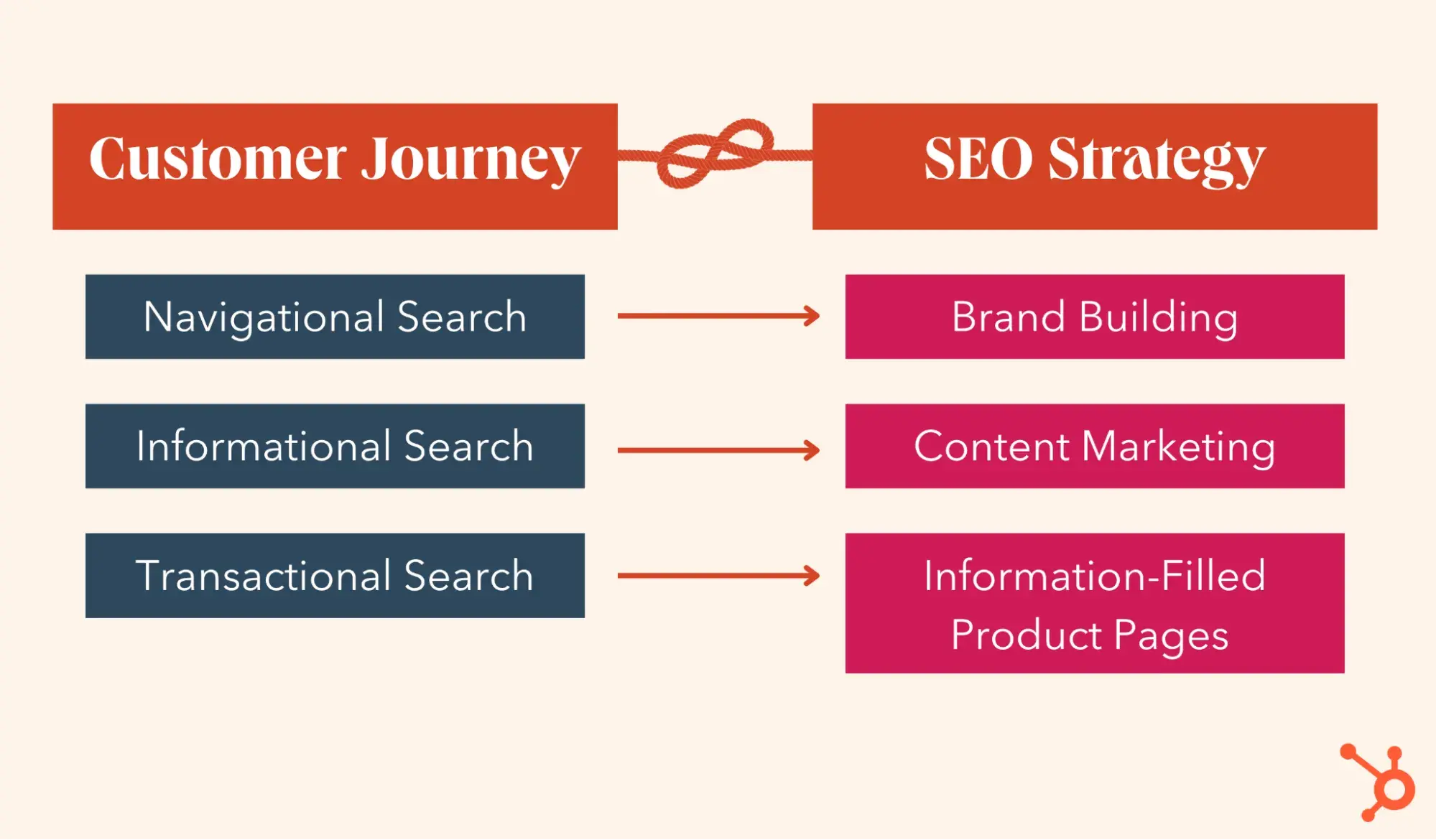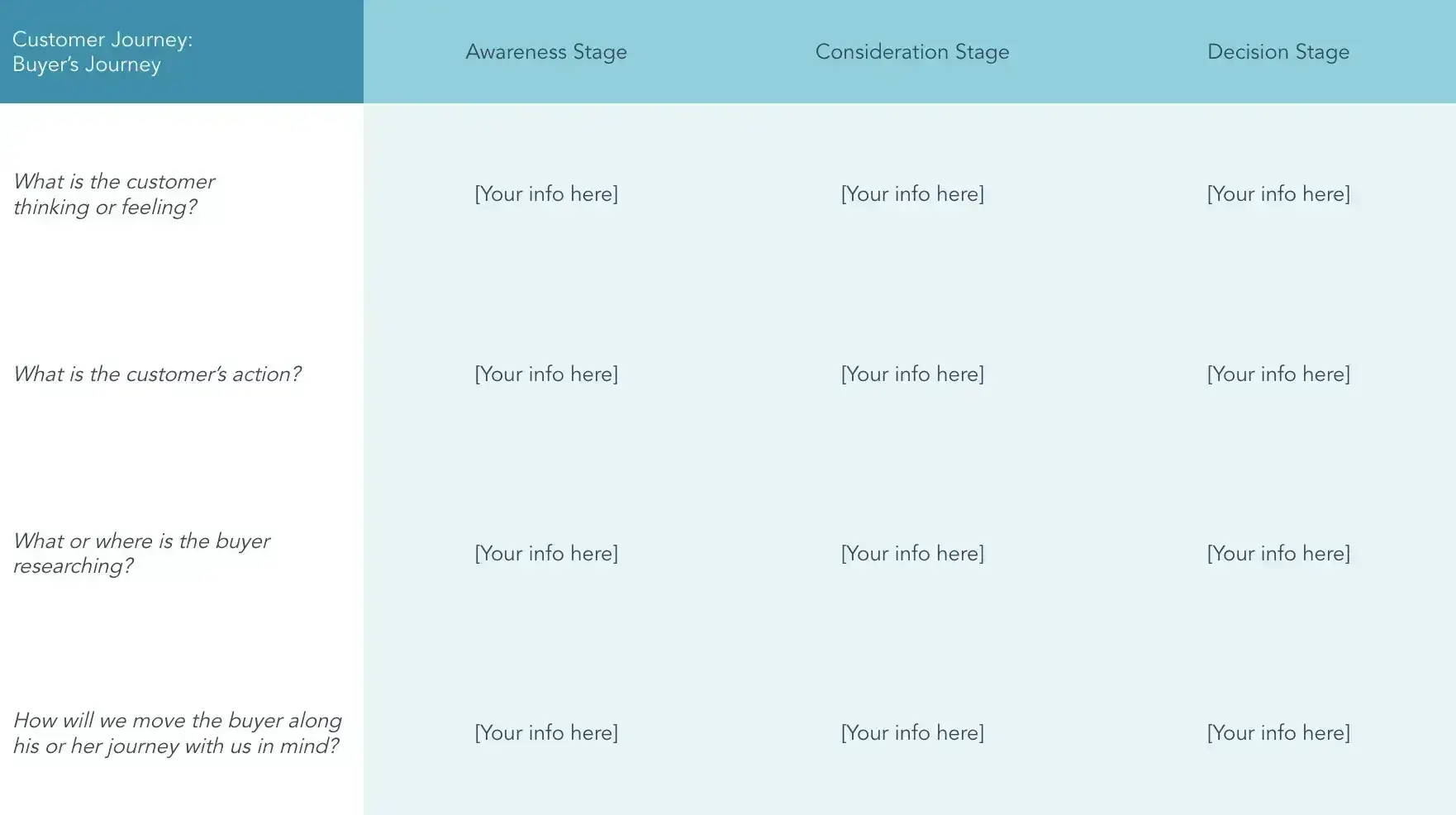Now Reading: How Customer Journey SEO Turns Clicks Into Conversions
-
01
How Customer Journey SEO Turns Clicks Into Conversions
How Customer Journey SEO Turns Clicks Into Conversions

Before you decide what to buy, you probably decide where to shop — which means turning to your favorite search engine. With online searches dominating as the starting point of most purchases, customer journey SEO is now mission-critical for every business.
I honestly can’t remember the last time I made a purchase without some online research first. Earlier today, I fell down a Google rabbit hole looking for bulk-dried tortellini. Last fall, it was a new MacBook.
By the time I was searching for the best deal on a MacBook, I had already done the bulk of my research — comparing specs, vendors, and reviews. And that tortellini search? It introduced me to brands I never would’ve found if they hadn’t optimized for the SEO-driven customer journey.
Here’s the real question: If your brand isn’t showing up when customers are searching, how much business are you losing to competitors?
Table of Contents
What is customer journey SEO?
Customer journey SEO is simply where SEO and customer journey mapping intersect. While most businesses focus on SEO as a way to rank higher, that’s only part of the equation.
The best SEO strategies do drive traffic. But they take it a step further, supporting customer inquiries through every step of the journey from discovery to purchase, maximizing visibility, engagement, and conversions.
Understanding Different Types of Searches
So, how do you integrate SEO into your customer journey? It starts by understanding the three core types of search: navigational, informational, and transactional.
As you can imagine, each phase correlates with different types of search queries. Aligning your SEO strategy to the customer journey means tying your efforts to each type of search.
Navigational Searches: When Customers Already Know You
Your prospect has a solid idea of what they’re looking for and just wants help going to a specific site.
Using my MacBook example above, some navigational searches I used were:
- “Apple new releases”
- “Costco computers and laptops”
- “Best Buy Geek Squad”
I knew I wanted an Apple product, and I was headed to different vendors I trusted to find out more about the models and to get the best price.
Successful SEO optimization for navigational searches focuses heavily on branding.
Informational Searches: When Customers Are Exploring Options
Your prospects are looking for answers, knowledge, and help. This usually means more top-of-funnel content. Examples of these searches for new laptops might be:
- “MacBook Air vs. MacBook Pro”
- “Best laptops for running an online business”
- “Is the latest MacBook worth it?”
When I was still deciding on a MacBook version and confirming that I wanted Apple over Windows, I looked for content like blog posts, comparison articles, and product reviews.
Successful SEO optimization for information searches means leaning into content marketing.
Transactional Searches: When Customers Are Ready to Buy
Your prospects are ready to buy. They might be looking for the best deal, still deciding between options, or looking for confirmation that their top pick is truly their best bet. Examples of these searches might be:
- “Best deals on MacBook Pro.”
- “Where to buy a MacBook Pro.”
- “Amazon MacBook deals today.”
At this stage, I was really just looking for the best deals and best options, so I looked at product pages and pricing comparisons.
Finally, successful SEO optimization for transactional searches means emphasizing information-rich product pages.
Here’s what that looks like in a visual:

Mapping Your Customer Journey
Before you optimize for SEO, you need to map out your customer’s journey. A customer journey map helps you visualize exactly where potential buyers engage with your brand — and where gaps exist.
Marketing Consultant Kerry Bodine explains it best in this must-watch video:
The great thing about customer journey maps is that they put customers first. By sketching a sticky-note map of people progressing through a theoretical funnel, you are putting the focus on customers.
I firmly believe that’s how every organization should function — elevating, honoring, and giving pride of place to the customers. This level of customer obsession leads to loyalty, referrals, and competitive advantage.
Pro tip: Don’t make the mistake of thinking customer journey maps are the same as sales funnels.
While sales funnels do provide a broad-based sketch of a process and can be a good starting point, they don’t actually map the journey. With that in mind, it’s best to think of them as two separate entities serving two separate purposes.
Creating Your Customer Journey Map
For the purposes of this article, I’ll stay high level. We’ve got a great post that goes into detail on creating your customer journey map, and I definitely encourage running through it.
With that said, here’s how to create your map and make it SEO-friendly.
Step 1: Identify the key stages in your customer journey.
We typically break this down into three stages:
- Awareness. When customers first discover their problem or need.
- Consideration. When customers begin researching their options.
- Decision. When customers are ready to buy.
In fact, you can see them in the screenshot below of our free customer journey map template.
Step 2: Map your customer search behavior.
Now, it’s time to figure out what they’re searching for at each phase. I want you to consider search intent as well as the specific keywords and questions.
- Awareness. Informational searches for “how to” content about solving their problem.
- Consideration. Product comparisons and brand research.
- Decision. Transactional and vendor searches.
With that in mind, start mapping out the types of searches they’re likely making. You can usually shorten this page by using your SEO marketing software (it’s HubSpot, right?).
Pro tip: Revisit this regularly. Consumer habits and markets change, which means search patterns do, too.
Step 3: Connect the customer journey to SEO efforts.
This is where the customer journey SEO comes in. It’s important to understand the types of content that best fit each phase before diving headlong into mapping. Here’s a quick rundown of how things often break down at each stage:
- Awareness. Top-of-funnel (TOFU) content like blogs, guides, and frequently asked questions.
- Consideration. Middle-of-funnel (MOFU) content like product comparison pages, case studies, and testimonials.
- Decision. Bottom-of-funnel content (BOFU) like product pages, pricing comparisons, and lead gen content.
Pro tip: Don’t overcomplicate it. Start with these quick wins:
- Repurpose what you can. Before creating a ton of new content, do an audit of your existing content. You may have a lot of great stuff that just needs some tweaking or optimization.
- Identify the low-hanging fruit. What content is easy to create that will have a big impact? TOFU content often fits into this category, but not exclusively.
- Prioritize content that serves a double duty. Maybe this means focusing on resources that can also help existing customers. Or perhaps it means focusing on optimizing product pages to create awareness earlier in the process.
Want more detail? Check out our free Customer Journey Mapping lesson.
More Customer Journey Mapping Examples
Your customer journey map can take MANY different forms and should help you identify what your customer is experiencing at each stage of the journey.
If the first template you find isn’t working for you and you can’t easily adjust it for your needs, I recommend opening up your favorite infographic tool to see what customer journey templates exist. I did a quick Canva search, and clicked on one of the first designs that caught my eye. As you can see below, there are several different options right below it.

I usually end up combining visuals with tables or spreadsheets because both are helpful to me.
A Step-by-Step Guide to Align SEO With Your Customer Journey
If your brand isn’t visible at the right moments, your competitors will be. That’s why SEO isn’t just about rankings. I want you to instead think about it through the lens of making it easy for your audience to find you when it matters most — or at the start of the customer journey.
If they can’t find you — clearly the best option — customers will veer off to a competitor. Or, even worse, they’ll get lost and end up frustrated or back at ground zero. So, findability is not an option.
Your SEO strategy should be built around user intent. Here’s how to optimize your content for each stage of the journey based on the customer journey map and content overview you mapped out above (you did that, right?).
Step 1: Make a list of keywords/queries for each point in the customer journey that involves a specific query type.
Find each touchpoint in your customer journey and use your favorite SEO keyword research tools to develop a list of keywords your customers are likely using.
Let’s say a customer is researching luxury vacations. They start with informational searches (“Best Caribbean resorts”), progress to navigational searches (“Four Seasons Bora Bora vs. Ritz-Carlton Maldives”), and finally move to transactional searches (“Four Seasons Bora Bora best deal”).
Type of website: Family vacation planning service
Customer: Suburban mom planning for family vacation
Point in customer journey: Getting a sense of travel costs for her upcoming family vacation.
Query type: Informational
Possible Keywords:
- family vacation cost
- cost for family of 4 to go to Disney World
- vacation cost calculator
- how much vacation can I afford
- average vacation cost for family of 4
- average vacation cost
- cost vacation Ireland
- cost vacation
- low-cost family vacation ideas
Step 2: Optimize for intent.
Now, take those keywords and plug them into your SEO strategy. How? Let’s take one keyword from the above example — “how much vacation can I afford?” Here’s what you might do:
- Create a page on the website.
- Page title: “How much vacation can I afford? | Vacation Planning.”
- H1: “How much vacation can my family afford?”
- Article: Discuss answers to this question in the article, and provide a CTA at the end.
- Create a series of four evergreen blog articles that deal with this question. Use this keyword and any longtail variations of “how much vacation can I afford?”
- Create an infographic that answers the question, “How much vacation can I afford?”
- Interview several experts on vacation affordability and post a video series on YouTube.
After conducting an effort like that, you will start to dominate that keyword. More to the point, you will also dominate this phase of the customer journey. Whenever potential customers engage in informational searches for this phase, they will likely see your website in the search results.
Step 3: Measure and refine.
SEO can have quick wins, but it’s also a bit of a long game. And as I touched on above, things change as markets and technology evolve. So what worked 10 years ago didn’t work 5 years ago — and definitely doesn’t now. To that end, what works well today will barely scratch the surface in the next 5-10 years.
So, use Google Analytics to track conversions and tools like Ubersuggest or Ahrefs to track SEO performance. Then, improve underperforming content and create new content to meet your new needs.
Step 4: Improve technical SEO for visibility.
Keywords and on-page SEO will help your customer journey optimization efforts immensely. But there’s another piece of the puzzle that matters, too — technical SEO. By improving your domain health and ensuring that your site is usable and functional, you build even more trust with Google and other search engines. And that ensures that your customer journey SEO efforts pay off.
If you’re not deep into the SEO world, it’s probably worth bringing in a technical expert, but you can do a lot of this stuff yourself if interested. You can check out our free Technical SEO lesson here.
Findability Is a Must for Customer Journey SEO
To stay competitive in today’s market, online visibility is a must.
If you want to market more effectively, and you don’t yet have a customer journey map, you’re going to want to make one. But don’t stop there. A customer journey map is an excellent exercise, but without SEO implementation, it’s going to be less than productive.
The bottom line? If you’re not mapping SEO to your customer’s journey, you’re leaving money on the table. And you and your customers deserve better.
Editor’s note: This post was originally published in September 2014 and has been updated for comprehensiveness.
























